We hope that each of you, our readers, will enjoy and appreciate this article we present about these 5 Incredible Invertebrates of Japan. It was certainly our pleasure to compile the information for you. May it provide you with both education and increased awareness.
These few species listed herein represent only a portion of the natural wonders found throughout the region, though. Yet, it’s our belief that they serve as excellent representations of the wonders found here. Check out some of our other articles for similar marvels.
Porites lutea
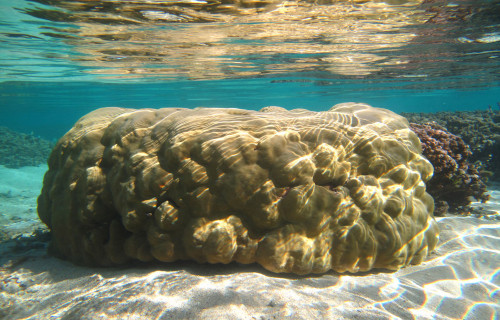
Porites lutea Facts
- Leading off this article about 5 Incredible Invertebrates of Japan we give you the remarkable marine animal known as the Porites lutea.
- The short and simple term listed here serves as the official scientific name of a variety of stony coral that’s evolved a unique behavioral pattern. For the moment, this marvel of Nature and evolution has no generally accepted common name.
- It held other scientific names in the past, though. The one it holds now is attributed to the combined work of two researchers. The scientists holding that scientifically noteworthy claim are the French researchers Henri Milne-Edwards and Jules Haime.
- This natural beauty represents only 1 of the more than 500 species placed within its genus. While it naturally bears many similarities to its relatives, it stands out due to the way in which it forms itself over time. That manner also makes for a remarkable sight.
- Fortunately, for the moment, this intriguing creature of the oceans appears to be maintaining a population base that’s both sizeable and stable. This further seems to hold true throughout the entirety of the known natural range of the Cnidarian.
- The IUCN, therefore, currently lists the Porites lutea as Least Concern on its Red List of Threatened Species. The remarkable animal does nevertheless faces certain potential threats. These naturally include habitat loss and the ongoing effects of climate change.
Porites lutea Physical Description
Like the vast majority of its kindred, the amazing Porites lutea evolved as a coloial creature. It therefore builds itself into massive shared structures. In the case of this specific species, however, those structures follow a general pattern, the reason for which remains unknown.
That’s because typically, the fascinating animal constructs either helmet-shaped colonies or hemispherical mounds. The sheer size of these structures further draw one’s attention. That’s due to the fact that these constructs attain diameters of as much as 13 ft (4 m).
The individuals creatures also build extremely close together, with the walls of each section being quite thin in nature. Most indivual specimens have a diameter of between 0.04 – 0.06 in (1.0 – 1.5 mm). The exterior of each structure also usually has a somewhat smooth texture.
The coloring of each composite construction of the Porites lutea also varies from site to site. Most commonly, though, this consists of either yellowish or a cream color. The precise location of each colony, however, often leads to the manifestation of other hues.
Due to this tendency, brighter shades do sometimes occur. These include a wide range of brighter colors. Such variations, though, most frequently appear when the colony appears in shallower waters. The precise reason for this, however, remains a bit of a mystery.
- Kingdom: Animalia
- Phylum: Cnidaria
- Class: Anthozoa
- Order: Scleractinia
- Family: Poritidae
- Genus: Porites
- Species: P. lutea
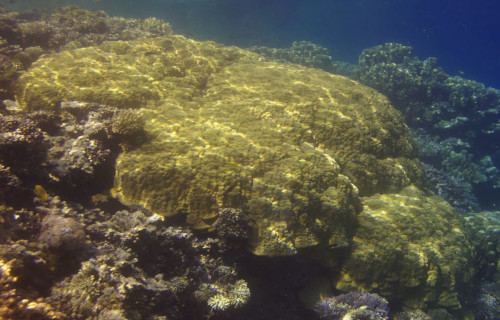
Porites lutea Distribution, Habitat, and Ecology
Fortunately, both for it, and for those of us who appreciate the beauty of Nature, the Porites lutea inhabits a relatively broad swathe of the globe. That’s due to the fact that its known habitat consists of much of the tropical portions of the Indo-Pacific Ocean.
More precisely, that range seems to begin near northern and eastern Australia. From there, it also spreads out to the waters around Japan, the Philippines, Indonesia, and Malaysia. It further extends its territory to as far as the east coast of Africa, and Madagascar.
Within that considerable expanse of oceans, though, its habitat preferences strongly limit the amount of territory it appears in. That holds true because the animal does not inhabit deep regions. It typically makes its home in regions such as lagoons and reefs.
These regions develop in what’s known as the tidal zone. That consists of the part of the ocean where it meets the land between the low and high tides. Here, the creatures frequently form structures often refered to as microatolls, remaining even if the animals die.
Such constructs generally contain the empty shells of deceased individuals located at or near the top of the mound or helmet-shaped colony. The living creatures, meanwhile, place themselves around the perimeter of the structure, as it grows, usually sideways.
Like its relatives, the Porites lutea feeds on a combination of algae living within their tissues, and small captured prey. The species also grows quite slowly, like others of its kind. The exact rate of growth, however, is strongly affected by the local environmental conditions.
Peacock Butterfly
Peacock Butterfly Facts
- Next up in this composition about 5 Incredible Invertebrates of Japan we present the breathtaking creature appropriately known as the Peacock Butterfly.
- For obvious reasons, this stunning Lepidoptera most frequently goes by the common name used here. Yet, the beautiful butterfly also has another, general name it’s known by. That’s because it’s also often referred to as the European peacock.
- Among professionals, such as researchers, however, it’s better known by its technical name. Fortunately for the rest of us, though, that’s a much simpler to pronounce term than most such terms. That’s due to the fact that it bears the official name of Aglais io.
- It received that official moniker due to the efforts of the renowned Swedish researcher, Carl Linnaeus. He recorded the first official recognition of the invertebrate as a separate and distinct species. This scientifically noteworthy deed occurred in 1758.
- Entomologists originally classified it as the sole member of the genus Inachis. Subsequent research, however, later reassigned it to another. Due to the efforts of later researchers, it’s now located in the genus Aglais, along with other related species.
- Thankfully, the work of Nature and evolution appears to be maintaining a population base that’s both stable and sufficient. This further seems to hold true throughout the entirety of its natural range. The IUCN, therefore, presently has no listing for it.
- The Peacock Butterfly nevertheless does face some potential threats to its existence. In this regard, it follows the pattern of most species on the plant. Habitat degradation or loss pose a potential danger. Its greatest threat, though, is likely climate change.
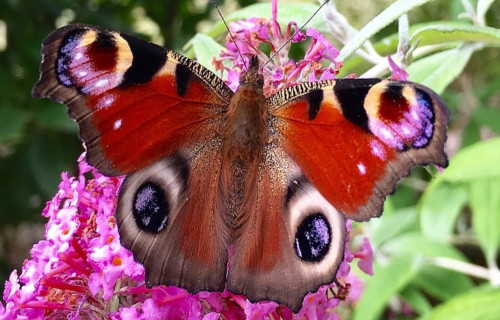
Peacock Butterfly Physical Description
Like many of its relatives, the remarkable Peacock Butterfly easily draws the eye of all those fortunate enough to encounter it. Unlike some of them, however, it merits that attention for more than just its distinctive appearance. It’s also has a respectable wingspan.
It further differs from many of its kindred in yet another way. That’s due to the fact that the creature displays no noticeable degree of sexual dimorphism. Distinguishing the two genders, therefore, frequently presents a problem for the average amateur viewer.
Mature individuals of both sexes attain an average wingspan measuring between 2.0 – 2.2 in (50 – 55mm). Exceptional specimens occasionally occur, of course. Yet even these scattered individuals rarely exceed this by much. Various factors, including environment, affect this.
It’s the visual aspect of the wings of the stunning Lepidoptera that garner the most attention, though. The underneath of the wings typically displays a uniform light brown. This appears in random patterns of shades and swirls. Irregular darker lines also cross the hindwings.
The upperside, however, displays as vastly different. Here is where the Peacock Butterfly earns its name. The top part of the forewing shows red, with brown patches. It also shows black-gray edges. Eyespots, like those of peacocks, also appear on the edges of each wing.
- Kingdom: Animalia
- Phylum: Arthropoda
- Class: Insecta
- Order: Lepidoptera
- Family: Nymphalidae
- Genus: Aglais
- Species: A. io
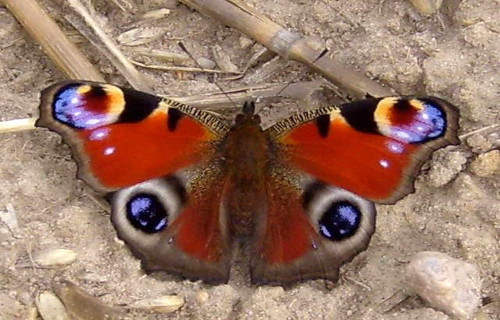
Peacock Butterfly Distribution, Habitat, and Ecology
Fortunately for it, the visually dazzling Peacock Butterfly inhabits a comparatively broad swathe of the globe. This same range also happens to include regions already well known for their abundance of natural beauty. It therefore fits right in with its surroundings.
Indeed, this marvel of evolution evolved as native to most of the continent of Europe. Yet its range doesn’t simply stop there. That’s due to the fact that population groupings of this wondrous Arthropod also appear in temperate Asia. It’s further seen as far east as Japan.
Throughout the entirety of that range, though, it displays the same preferences in its choice of habitat. These, however, also remain comparatively broad. Populations of the beauty inhabit a wide range of locations, though all appear in areas of temperate conditions.
This flexibility also includes a range of altitudes. Concentrations of the invertebrate appear at altitudes ranging from lowland sections, to altitudes of up to 8,200 ft (2,500 m) above sea level. These include such locations as meadows, fields, pastures, woods, parks, and gardens.
Adult specimens of the Peacock Butterfly feed in much the same manner as other butterflies. These feed primarily on the nectar of various local plant species, such as dandelions, clover, and willows. Some also augment this by feeding on tree sap and rotten fruit.
Males tend to be territoral. Females, though, move over large areas. Females lay eggs in early spring, typically in batches of around 400. Its eye-spots deter most, though not all, avian predators. Rodents, however, are not bothered by these, and thus form its major predator.
Leaf Slug
Leaf Slug Facts
- Making its presence known now in this listing of 5 Incredible Invertebrates of Japan is the marine marvel best known as the Leaf Slug.
- This pleasant-looking denizen of the oceans of the world bears, among others, the common name that we use here. It’s also known to many by several other alternate names. These include such similar terms as leaf sheep and salty ocean caterpillar.
- Professionals, such as researchers, meanwhile, typically refer to the creature by its formal scientific name. That’s the truly tongue-twisting term of Costasiella kuroshimae, however. It further represents a member of a highly unique form of sea slug.
- It’s also a species only recently identified. That’s because it remained unidentified to science until 1993. The credit for the first recognition of the creature as a separate and distinct species further goes to a respected Japanese researcher from the region.
- For the moment, the IUCN has no listing for this species. Any such listing of its status would be reflected on the organization’s Red List of Threatened Species. That lack of status of any kind simply reflects the fact that, for now, science knows little about it.
- It’s likely, however, that the fascinating Leaf Slug faces several threats to its continued existence as a species, like many now do. Given its habitat, the dangers of habitat loss likely pose a danger to it. Its greatest threat, however, likely comes from climate change.
Leaf Slug Physical Description
The fabulous Leaf Slug, with its eye-catching appearance, fully merits appreciation as a work of Nature. It accomplishes this, however, wholly regardless of physical size. That holds true because it’s actually a tiny species, especially in comparison with some of its relatives.
Individuals also vary significantly in terms of size, as well. This further occurs entirely without regard to gender, as far as limited research indicates. Unlike many of its relatives, therefore, this particular gastropod displays no noticeable degree of sexual dimorphism.
The majority of observed specimens attain an overall length measuring roughly 0.2 in (5 mm). Exceptional measured specimens, though, sometimes reach lengths of as much as 0.39 in (1 cm). Research remains limited, though for now these statistic seem to hold up.
Some of the alternate names for the Leaf Slug understandably derive from its physical appearance. A pair of long, slender, dark colored rhinophores protrude from the top of its head, resembling horns, or insect antennae. The head also possesses two dark eyes.
Precise color patterns vary, yet some shades predominate. Most individuals mainly display a bright green shade across their bodies and spiny protuberances. Some specimens, however, also display small patches of various other colors on the tips of the structures.
- Kingdom: Animalia
- Phylum: Mollusca
- Class: Gastropoda
- Order: Sacoglassa
- Family: Costasiellidae
- Genus: Cosatasiella
- Species: C. kuroshimae
Leaf Slug Distribution, Habitat, and Ecology
Due to the fact that science only recently discovered the fabulous Leaf Slug, the full extent of its range cannot be stated with complete certainty. For the moment, however, the known range of the magnificent sea creature sadly remains moderately restricted.
The limited portion of the globe in which it’s known to appear covers a portion of the waters of southeast Asia. The original discovery of the tiny gastropod occurred off the coast of the island of Kuroshima, in Japan. Since then, though, it’s been seen in a few other places.
The other locations in which it’s been sighted consist of the waters around the Philippines and Indonesia. In all regions in which it’s been sighted to date, though, the habitat choice remains the same. It appears to live solely in the shallow waters along the coastline.
Beyond these facts, however, researchers presently know very little about its lifecycle. Among the relative dearth of information, though, one startling fact does stand out. That’s because these tiny marvels actually use the process of photosynthesis, like plants!
The diet of the remarkable Sea Slug seems to consist almost entirely of sea algae. When the animal consumes this, it actually draws the chloroplasts from the algae. That enables them to photosynthesize, which actually makes individuals glow with bioluminescence.
Orange Oakleaf
Orange Oakleaf Facts
- Now making its appearance in this collection of 5 Incredible Invertebrates of Japan comes another remarkable insect, the Orange Oakleaf.
- This magnificent Lepidoptera most frequently goes by the unusual, but descriptive and somewhat informative, common name. The beautiful insect also possesses several other general names, though, employed in various parts of its range.
- These include such terms as the dead leaf and the Indian oakleaf. Professionals, like researchers, typically refer to it by its formal scientific name. That’s the less colorful term of the Kallima inachus. But, by either name, it’s a beautiful species.
- It received its technical name due to the work of the respected French zoologist, Louis Michel François Doyère. This noted researcher made the first formal ackowledgement of it as a separate and distinct species. This noteworthy action occurred in 1840.
- Fortunately, the stunning butterfly appears to currently be maintaining a population base that’s both stable and sufficient. This fortunate trend also seems to hold true throughout the entirety of the known native range of the breathtaking invertebrate.
- This sitution further distinguishes it from many of its relatives, unfortunately for them. Due to that situation, however, the IUCN presently has no listing for the species. If it held a status with them, it would appear on the organization’s updated Red List.
- The marvelous Orange Oakleaf does face some potential threats to its existence. That’s because, like nuerous creatures, habitat loss presents a potential threat. Most likely, though, its greatest threat comes from the effects of ongoing climate change.
Orange Oakleaf Physical Description
The vusually stunning Orange Oakleaf clearly garners attention and admiration from those fortunate enough to encounter it. The dazzling Arthropod further does so for several reasons. This alone distinguishes it from many of its countless relatives globally.
For starters, part of that’s due to the fact that it ranks as comparatively large for a butterfly. It also, much like many other Lepidopotera, displays a moderate degree of the physiological characteristic of sexual dimorphism. In its case though, it’s not in size.
Mature individuals of both genders therefore remain virtually identical in overall average sizes. This often varies from region to region, however. That’s typically due to various environmental factors. A typical wingspan nevertheless ranges from 3.3 – 4.3 in (8.5 – 11 cm).
It’s in general appearance, though, that the gender-based difference manifests itself, though in only minor ways. The upper side of the hindwing primarily presents as a light blue shade. It also displays mulitple light colored lines, running from front to back.
The upper side of the forewings, however, present a strikingly different pattern. These, in fact, manifest a pattern of three different sections. The outer area shows deep black, with a small white spot near the tip. The middle, though, shows orange, and the base light blue.
Yet it’s the under side of both wings that truly set the Orange Oakleaf apart. That’s due to the extraordinary degree of camouflage the invertebrate has evolved. This part of the wings present shades of dark and light brown, with a texture resembling a dried leaf.
- Kingdom: Animalia
- Phylum: Arthropoda
- Class: Insecta
- Order: Lepidoptera
- Family: Nymphalidae
- Genus: Kallima
- Species: K. inachus
Orange Oakleaf Distribution, Habitat, and Ecology
For those of us who appreciate Nature, it’s pleasant to know that the remarkable Orange Oakleaf inhabits a moderately extensive part of the globe. That’s due to the fact that this marvel of evolution evolved as native to certain sections of the continent of Asia.
Generally speaking, this native zone of habitation extends roughly from Japan to India. Within that zone, though, it naturally appears ins some areas more than others. The majority of specimens therefore live in countries that include Nepal, India, China, and Taiwan.
Across the regions in which it appears, however, it displays a fairly impressive versatility. That’s due to the fact that it appears across a wide range of altitudes. Some concentrations appear at or near sea level. Others, meanwhile, live as high as 8,000 ft (2,400 m).
In all of these habitats, though, the invertebrate displays decided preferences for the type of environment it calls home. That’s because the vast majority of individuals live in dense forests. Most further appear along small streams, and amongst the dense undergrowth.
Like many of the species in its Family, the beautiful Orange Oakleaf evolved as frugivorous in nature. It therefore possesses a strong preference for certain sources of food. These sources principally consist of the sap from local trees, and various overly ripe fruit.
On the other hand, its own predators include a wide array of creatures. This list mainly includes local species of ants, spiders, birds, and wasps, though. In defense, it developed powerful wings, making it a strong flyer. Camouflage remains its main defense, however.
Elegance Coral
Elegance Coral Facts
- Closing out this article about these 5 Incredible Invertebrates of Japan is the dazzling beauty understandably named the Elegance Coral.
- The descriptive term given to it perfectly serves as one of the common names for this particularly beautiful species of Cnidaria. It also goes by several other common names, though. These names include the ridge coral and the wonder coral.
- Its cumbersome scientific name, meanwhile, consists of the hard to pronounce Catalaphyllia jardinei. It also holds a secret. This quite remarkable creature further represents, at least for the moment, the only known member of its entire genus.
- The first official scientific recognition of this gorgeous animal occurred in 1893. At that time, this occurred as a result of the work of the respected English biologist, William Saville-Kent, although he gave it a different name in the beginning.
- Unfortunately, due to its great beauty and distinctiveness, it’s now popular in reef tanks. As a result, its population numbers in the wild have plummeted. Due to this, the IUCN currently lists it as Vulnerable on its Red List of Threatened Species.
- The lovely Elegance Coral also faces even further threats to its existence. Habit loss now poses a very real threat to its surviving wild populations. The ongoing effects of climate change most likely poses its greatest threat in the wild, though.
Elegance Coral Physical Description
The magnificent Elegance Coral truly earns its name. While it’s certainly a beautiful species, it also impresses those who know of it in another way, as well. That’s due to the fact that, along with being quite lovely, it’s also among the largest of all know forms of coral.
More precisely, mature adults of this species attain an average length of roughly 12 in (30 cm). The same individuals further reach an average height of approximately 8 in 20 cm). The general outline remains highly irregular in shape, though, due to its construction.
The gorgeous Elegance Coral possess a branching coralite skeleton displaying a brilliant color. This part of the animal generally shows a light green shade. The many tendril surrounding its central disk, however, most commonly show a bright pink in color.
- Kingdom: Animalia
- Phylum: Cnidaria
- Class: Anthozoa
- Order: Scleractinia
- Family: Euphylliidae
- Genus: Catalaphyllia
- Species: C. jardinei
Elegance Coral Distribution, Habitat, and Ecology
Even though its numbers appear to be diminishing, the Elegance Coral nevertheless still inhabits a relatively large section of the globe. In point of fact, it appears in the western and central Pacific Ocean, along with a part of the Indian Ocean, as well.
More precisely, that range extends as far north as the island country of Japan. To the south, however, it appears in scattered colonies as far away as Australia. Unfortunately, though, it now mainly appears in only widely scattered small concentrations in the range.
Wherever it still makes its home, though, it displays a strong preference for its choice of habitat. The animal lives almost entirely on areas of reefs. Even there, though, it typically prefers to dwell on the central portion of the reef, for reasons that remain unknown.
Individuals also sometimes choose to live on the sandy bottom, but rarely, if ever, on rocks. The amazing Elegance Coral further prefers for the regions its inhabits to have strongly flowing, sometimes even agitated, currents, again for undetermined reasons.
Much like many of its relatives, it can reproduce either sexually or asexually. The latter it manages via the creation of new branches, that later drop off, and form new colonies. Although mainly photosynthetic, it also consumes small quantities food, often detritus.
5 Incredible Invertebrates of Japan
We hope that each of you enjoyed reading, and hopefully learning from, this article we’ve written about these 5 Incredible Invertebrates of Japan. It’s also our hope that doing so has left you with either a new or renewed appreciation for such wonders of Nature.
Unfortunately, however, many of their kindred around the world now find themselves facing strong threats to their continued existence as a species. Many of those dangers, in fact, stem from the actions of mankind. We must do all we can to protect and preserve them all.
Check oout our other articles on 4 Outstanding Orchids of Australia, Africa’s Many Geological Masterpieces, 4 Magnificent Birds of Mexico, The Mighty Tornado
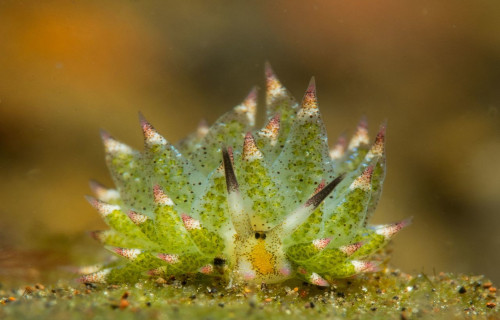
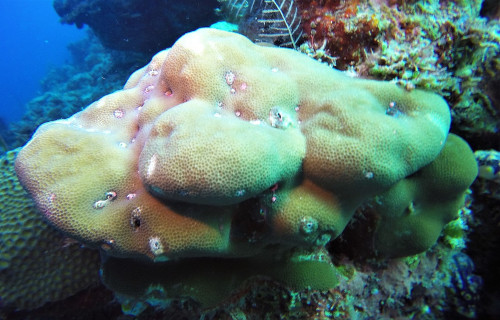
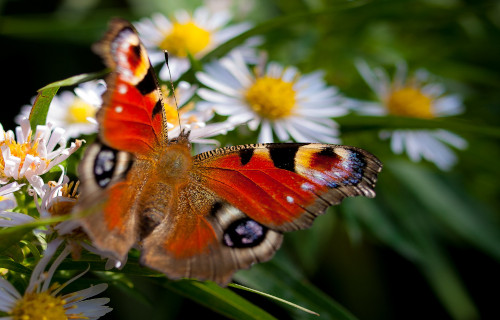
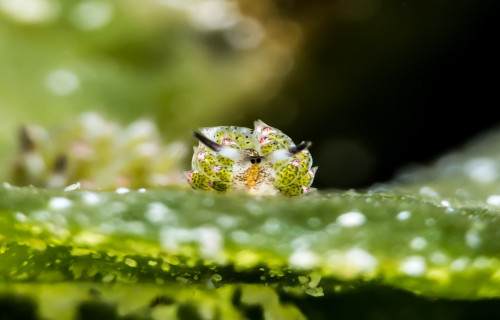
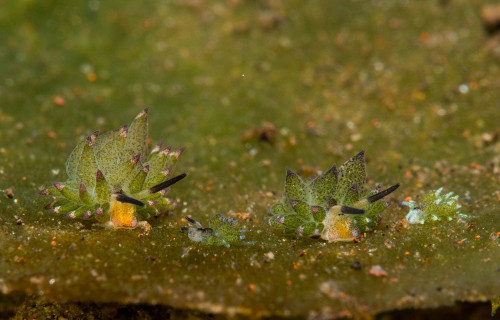
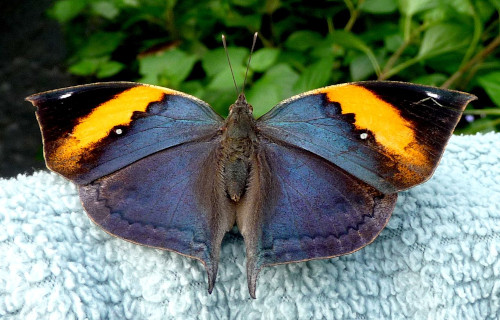
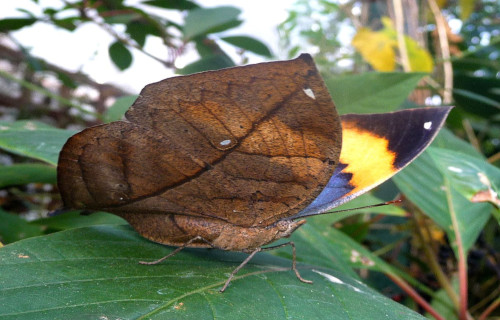
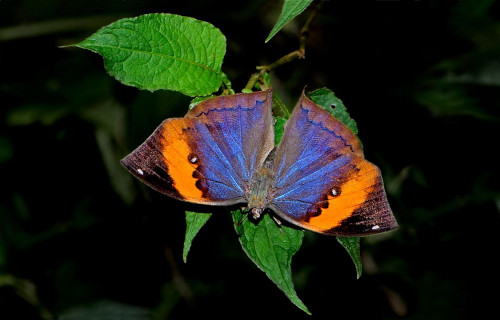
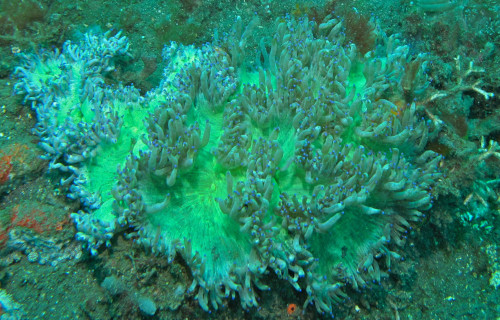
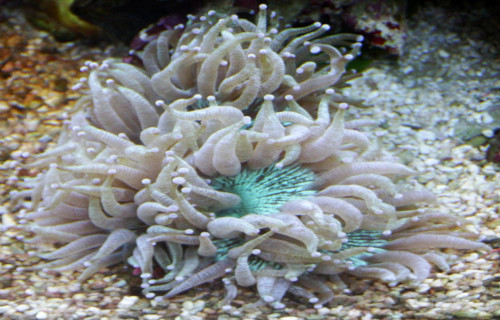
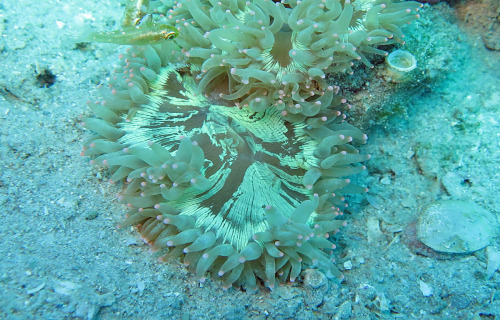









Leave a Reply